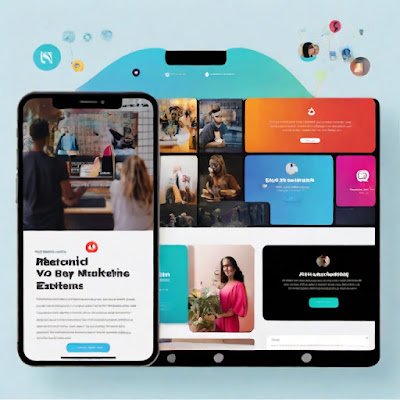 |
| Image created with Leonardo.ai |
Introduction
Artificial Intelligence (AI) has rapidly evolved, becoming an integral part of various aspects of our lives. From healthcare and finance to education and entertainment, AI technologies offer immense potential to drive innovation and efficiency. However, as these technologies advance, the importance of AI governance becomes paramount. Establishing ethical guidelines, regulations, and frameworks is crucial to ensure responsible development, deployment, and use of AI. In this article, we explore the reasons why AI governance is essential in navigating the ethical landscape of AI.
1. Addressing Ethical Concerns
One of the primary reasons for implementing AI governance is to address ethical considerations associated with AI technologies. Algorithms can inadvertently perpetuate biases present in training data, leading to unfair outcomes. Governance frameworks help identify and mitigate biases, promoting the development of AI systems that treat individuals fairly and equitably.
2. Ensuring Transparency
Transparency is a cornerstone of trustworthy AI. Users and stakeholders should understand how AI systems make decisions, especially when those decisions impact individuals' lives. AI governance emphasizes transparency, requiring developers to provide insights into the decision-making processes of their algorithms. This transparency builds trust and allows users to comprehend the rationale behind AI-driven outcomes.
3. Regulation and Compliance
Implementing regulations specific to AI is essential to ensure that these technologies align with legal standards and societal norms. Regulations provide a framework for responsible AI development, setting boundaries to prevent misuse and potential harm. Compliance with these regulations is crucial for fostering a culture of accountability within the AI community.
4. Protecting Privacy
AI often relies on vast amounts of data, raising concerns about privacy infringement. AI governance frameworks establish guidelines for the collection, storage, and use of personal data, safeguarding individuals' privacy rights. Striking a balance between data-driven innovation and privacy protection is a key objective of AI governance.
5. Building Accountability
Determining responsibility in the event of errors or harm caused by AI systems is a critical aspect of governance. Clear accountability mechanisms ensure that developers, organizations, and other stakeholders are held responsible for the impact of their AI applications. This accountability promotes a culture of responsibility and encourages continuous improvement in AI systems.
6. Enhancing Security
As AI technologies
become more pervasive, the need for robust security measures intensifies.
Governance frameworks address security concerns, mitigating the risks of
malicious use, hacking, or manipulation of AI algorithms and data. Protecting
the integrity of AI systems is vital to maintaining public trust in these
technologies.
7. International Collaboration
AI governance is not confined by national borders. International collaboration is crucial for establishing consistent global standards that transcend geographical boundaries. Collaborative efforts ensure a harmonized approach to AI governance, preventing fragmentation and enabling a unified response to the challenges posed by advanced AI technologies.
Conclusion
In conclusion, the importance of AI governance cannot be overstated. It is the linchpin that holds together the ethical fabric of AI development and deployment. By addressing ethical concerns, ensuring transparency, implementing regulations, protecting privacy, building accountability, enhancing security, and fostering international collaboration, AI governance sets the stage for a future where AI technologies are not only innovative but also responsible and beneficial to society as a whole. As we continue to embrace the transformative power of AI, robust governance frameworks will be the guiding force that navigates us through the evolving ethical landscape of artificial intelligence.
Books we recommend to read.
1. "Artificial Unintelligence: How Computers Misunderstand the World" by Meredith Broussard
This book critically examines the
limitations and challenges of AI, shedding light on the societal implications
and the need for responsible governance.
2. "AI Ethics" by Mark Coeckelbergh
Coeckelbergh explores the ethical
dimensions of AI, addressing issues such as transparency, accountability, and
the impact of AI on society.
3. "Rebooting AI: Building Artificial Intelligence We Can Trust" by Gary Marcus and Ernest Davis
The authors discuss the current
state of AI, its limitations, and propose strategies for building more reliable
and ethical AI systems.
4. "The Age of Surveillance Capitalism: The Fight for a Human Future at the New Frontier of Power" by Shoshana Zuboff
While not solely focused on AI
governance, this book provides a comprehensive examination of the impact of
technology on privacy and society, offering insights into the broader context
of governance challenges.
5. "Ethics of Artificial Intelligence and Robotics" edited by Vincent C. Müller
This collection of essays brings
together perspectives from various experts on the ethical considerations
surrounding AI and robotics.
6. "Robot Rules: Regulating Artificial Intelligence" by Jacob Turner
Turner discusses the legal and
regulatory challenges associated with AI, offering insights into the governance
frameworks needed to manage these technologies responsibly.
7. "Artificial Intelligence: A Guide for Thinking Humans" by Melanie Mitchell
While exploring the capabilities of AI, Mitchell also discusses the societal and ethical implications, prompting readers to think critically about the role of governance in shaping AI's impact.






